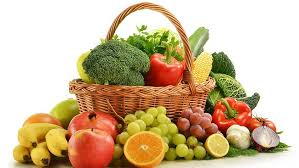-
Many things effect life insurance rates. One factor can be high blood pressure. Want to live longer? Want to have lower life insurance rates? Consider the Dash Diet. You’ve never heard of the DASH Diet? DASH stands for Dietary Approaches to Stop Hypertension. We know exercise, diet and medication can impact blood pressure. Controlled high blood pressure means better life insurance premiums. The DASH diet is low in fat and sodium but rich in low-fat or nonfat dairy foods, healthy fats, fruits and vegetables. It can lower blood pressure.
How can you add DASH to your lifestyle? Make small changes first by changing only your fruit and vegetable intake. You can do this! Keep track of the fruits and vegetables you eat and slowly add more to your diet. Your goal is 8 to 10 servings a day. A serving of most vegetables and fruits is only ½ cup, about the size of an ice cream scoop. If you have health issues that cause you to have too much potassium in your blood you may need a diet that is lower in potassium than the DASH diet.
Consider these suggestions for eating more fruits and vegetables:
- Try to eat fruits and/or vegetables at every meal. Take fruit to work or school as a snack.
- Make a baked potato bar. Serve baked potatoes with a variety of toppings such as broccoli, chili, salsa, and beans. If you use toppings from a can or jar be sure to choose low-sodium varieties, or even better, make them yourself from fresh ingredients. Be creative. You could end up with 4 to 5 servings of vegetables at one meal.
- Try nonfat or low-fat yogurt topped with fruit and unsalted nuts.
- For a snack, have a smoothie made with low-fat or fat-free milk and frozen fruit chunks.
- Combine a ready-made pizza crust with low-fat mozzarella cheese and lots of vegetable toppings. Use tomatoes, squash, spinach, broccoli, carrots, cauliflower, peppers and onions.
- Use a variety of cut-up vegetables with a low-fat dip as an appetizer instead of high-fat chips and dips. Try some new vegetables.
- Make a stir-fry containing lots of different vegetables and serve over brown rice.
- Try some vegetarian meals using beans and peas.
- Add garbanzo beans to a salad.
- Use fat-free refried beans.
- Make split pea or black bean soup.
- Buy a vegetarian cookbook and try one recipe each month or each week.

Once you are eating the right amount of fruits and vegetables each week, move on to other changes. Eat less saturated fat found in meats, dairy products and processed foods. Use vegetable oils such as canola, olive, and corn oils. Eat healthy fats from nuts and fish. Eat less sodium by cutting down on how much processed food you eat such as snack items, lunch meats and canned soups. Buy frozen meals that have less than 400 milligrams of sodium listed on the label. Drink fat-free (skim) milk. A glass of fat-free milk has only 80 calories and no fat and is packed with blood pressure-lowering nutrients. Get 2 to 3 servings of milk or milk products every day. For breakfast, have whole-grain cereal, fruit and skim milk.
Try these suggestions and you will be on your way to a healthier diet.
(Dietary suggestions offered by c. miller of aetna)
For more information or to request a FREE Quote call us today!
Life Insurance in Bedford - Reynold Jones Insurance Group
1909 Central Drive, Suite 101, Bedford, TX 76021
(817) 545-3900 - [email protected]

